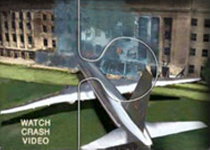 |

|

|
||||||
 |
||||||
|
From Wikipedia: Such simulations were originally intended to model combat scenarios against an abstract enemy in a specific terrain without the loss to troops and incurring only minimal damage to miltary equipment and resources. Such simulations can give the troops and commanders of a given operation a ‘dry run’ and provide a psychological advantage for everyone involved. Typically most War Games are held under ‘real’ battlefield circumstances – matching the actual environment in which planned or expected attacks are to be carried out as closely as possible. This would permit the strategists to avoid common pitfalls, such as not taking into account environmental conditions specific to the relevant location and other aspects that may be easy to overlook in theory. Such simulations are known as ‘Full Scale Field Exercises’. However these are often quite expensive to run and for this reason they are limited to situations where they are required by military intelligence oversight.
War Games: A Background Since the first soldier picked up a stick in imitation of a real sword, the line between war and entertainment has been decidedly blurry. Military training in ancient Greece and Europe in the Middle Ages gave rise to the Olympics and medieval jousting tournaments respectively; paintball guns and video games have become tools for honing the skills of today’s soldiers. The realm of strategy, however, is where games have exerted the most remarkable impact on the conduct of war, serving as a tool for, as one U.S. Army general put it, "writing history in advance." The following is excerpted from a paper called "An Introduction to War Games" by M.G. Weiner and made available by the Rand Corporation – click here for source.
Forms of War Game The Map Exercise and the Sand Table The ‘Map Exercise’ is a minor form of War Game conducted by senior planner/strategists where terrain and troop movement aspects need to be considered independently. These are very close to ‘Sand Table Exercises’. Both types of exercise are now being migrated to digital platforms as use of the computer becomes more pervasive. War Games in the Age of the Computer Increasingly, such simulations exist in the digital realm. This is especially true as computer assistance and visualization/targeting takes a more and more important role in real warfare. In the case of attack by drones (by proxy) – there is no human component on the battlefield and a battle simulation is indistinguishable from an actual operation. The 1983 movie ‘War Games’ imagines such a scenario and the ensuing catastrophe, with a network of ICBMs aimed at the USSR mistakenly triggered by a high school student over a computer network. I am not sure if the author of the script realized just how prescient such a plot would be 30 or 40 years later, as the lines between gaming / simulation and actual warfare become more blurred. An example of such an exercise, traditionally known in pre-digital parlance, as a ‘sand table exercise’ (since most such models were generally acted out with model troops and vehicles on a ‘sand table’) is known as ‘DARWARS’ – a set of digital simulations and exercises developed under the guidance of DARPA and the DoD (Department of Defense).
The Convergence of Simulation and Reality In order to be able to run a simulation as effectively as possible, whenever possible, a war game should mimic reality as closely as possible. Elements of chance which may be overlooked by overly simplistic computerized models can then be avoided. Hence many ‘war games’ are played out on real battlefields under anticipated battle conditions. However – because of the increasing role of technology as support for Battle Operations, the technological counterpart to war games can often be very effective in developing a particular strategy. An example of this might be the simulation of a jetliner running into the World Trade Center on September 11, 2001, which was claimed by US Forces at the time as the reason for suspending military and NORAD protocols (hence the lack of response to the actual attacks, as there was some confusion as to whether the attacks were ‘real’ or ‘simulated’). See also our section on ‘NORAD Protocols’ Increasingly however – the lines between simulation and reality present irresistible political opportunities. The possibility of feigning a simulated operation as real can have poltiical and financial benefits which are unparalleled. An example of this would be ‘Operation Northwoods’ (see link) In commercial media also – poltiical strategies can be effectively acted upon. By presenting false or erroneous ‘stories in the media, by presenting the appropriate ‘stimulus’, any desired public response may be effected. A news story can be run the night before an election or vote for/against an issue – once the polling is closed and the ‘story’ revealed to be erroneous, political goals can be accomplished without actually involving poltiicians in misleading the public directly. Of course, this involves the complicity of the media source. But where such commercial operations are concerned, and the results of winning public opinion of such large scale consequence – the purchase of media influence is both commonplace and beneficial for both parties – see also the following link on media influence.
REFERENCES ‘Military Simulation" – Wikipedia An Introduction to War Games, M.G. Weiner, Rand Corporation, 1959. Military Planning in an Uncertain World, Herman Kahn, Irwin Mann, Rand Corporation, 1957. War Games: A Short History, Foreign Policy Magazine, Sept. 2011 CIA War Games Simulate Electronic Assault ‘Silent Horizon’ war games wrap up for the CIA
|
 List of Members
Log in
List of Members
Log in